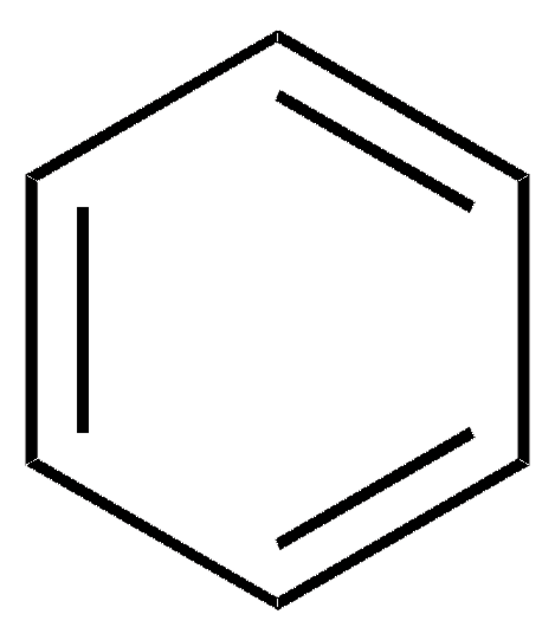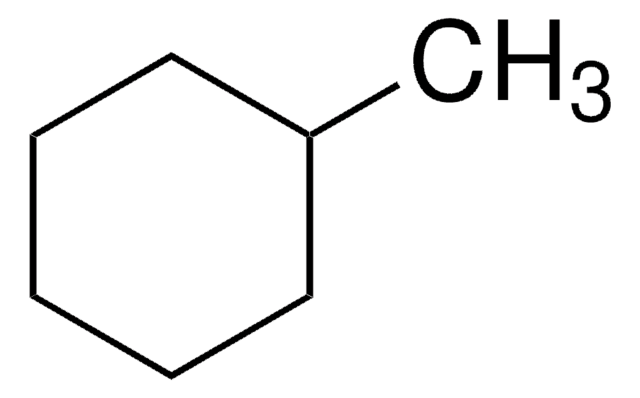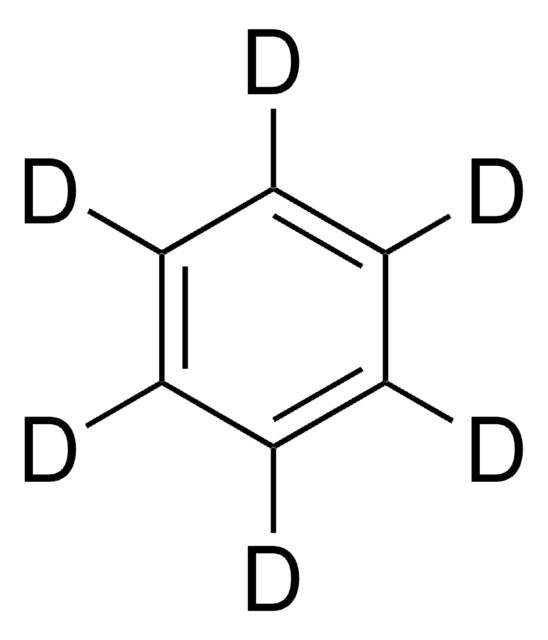319953
Benzène
ACS reagent, ≥99.0%
About This Item
Produits recommandés
Qualité
ACS reagent
Niveau de qualité
Densité de vapeur
2.77 (vs air)
Pression de vapeur
166 mmHg ( 37.7 °C)
74.6 mmHg ( 20 °C)
Essai
≥99.0%
Forme
liquid
Température d'inflammation spontanée
1043 °F
Limite d'explosivité
8 %
dilution
(for analytical testing)
Impuretés
H2SO4, passes test (darkened)
thiophene, passes test (limit ∼1ppm)
≤0.005% S compounds
≤0.05% water (Karl Fischer)
Résidus d'évap.
≤0.001%
Couleur
APHA: ≤10
Indice de réfraction
n20/D 1.501 (lit.)
pb
80 °C (lit.)
Pf
5.5 °C (lit.)
Densité
0.874 g/mL at 25 °C (lit.)
Chaîne SMILES
c1ccccc1
InChI
1S/C6H6/c1-2-4-6-5-3-1/h1-6H
Clé InChI
UHOVQNZJYSORNB-UHFFFAOYSA-N
Vous recherchez des produits similaires ? Visite Guide de comparaison des produits
Catégories apparentées
Description générale
Application
- Heck Reaction of vinyl bromides with styrenes to synthesize functionalized 1,3-dienes.
- Gallium-catalyzed reductive lactonization of γ-keto acids to γ-lactone derivatives.
- Anionic polymerization of styrene and 1,3-butadiene in the presence of phosphazene as a base.
Mention d'avertissement
Danger
Mentions de danger
Conseils de prudence
Classification des risques
Aquatic Chronic 3 - Asp. Tox. 1 - Carc. 1A - Eye Irrit. 2 - Flam. Liq. 2 - Muta. 1B - Skin Irrit. 2 - STOT RE 1
Organes cibles
Blood
Code de la classe de stockage
3 - Flammable liquids
Classe de danger pour l'eau (WGK)
WGK 3
Point d'éclair (°F)
12.2 °F
Point d'éclair (°C)
-11 °C
Faites votre choix parmi les versions les plus récentes :
Déjà en possession de ce produit ?
Retrouvez la documentation relative aux produits que vous avez récemment achetés dans la Bibliothèque de documents.
Notre équipe de scientifiques dispose d'une expérience dans tous les secteurs de la recherche, notamment en sciences de la vie, science des matériaux, synthèse chimique, chromatographie, analyse et dans de nombreux autres domaines..
Contacter notre Service technique






